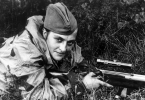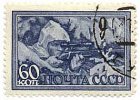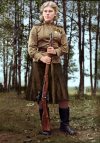Thanks for the comments on those Sheffield pics
A few remarks on the actual photo contexts (in no particular order):
I thought you'd all like that bench. That photo was taken when
 Jack Black
Jack Black
and I were at the Abbeydale Industrial Hamlet - the old Tyzack Scythe Works. The bench is in the Tyzack packing room, where long coils of heavy rope were cut and layered in twists between scythes in their shipping crates.
I certainly enjoyed standing at the different stations at that bench, running my hands over those wear grooves, and imagining the stories it could tell.
A bit of background to Stan's slightly whimsical smile in this photo. I didn't take my phone out to take a photo until we had been chatting away for a while. I'm sure Stan wouldn't have minded but I was so enjoying the conversation with Jack and Stan, that I didn't want to interrupt the flow by snapping pics until later.
Stan had just been showing us the nearly completed sportsmans knife he had just made, which he said someone was coming from Malaysia to 'fetch'.
I handled it with the customary knife show manners: asking if I could open the blades, opening them one at a time, and giving them a 'soft' closing.
Stan had watched the way I closed the blades on the knife and asked me why I did that. I said I understood it to be polite when handling other peoples valuable knives. He smiled and affirmed that there was no need whatsoever to baby his knives in such a fashion, adding quietly that you'll not find any edge rapping or blade rub on
his knives. I liked how Stan was basically confirming that his knives are fully capable and dependable Sheffield working tools under the fancy filework and trimmings.
I took that photo, and he looked at the knife and seemed a bit pensive as he reflected that most of his knives could look forward to never actually being used.
The house with the driveway running through it, is where the 'original' Barlow house (and presumably, working cutlery premises) on Campo Lane once stood.
The honeycomb/wasp egg looking photo, is of discarded crucibles stacked outside the door of the initial raw steel puddling rooms at Abbeydale.
The poem is by Andrew Motion, and the street art is of Harry Brearley, one of the inventors and refiners of the earliest stainless steel alloys.
Great post,
 Trout Hound
Trout Hound
. I've noticed a similar thing in shooting. I help the Range Officers down at our local club train and supervise from time to time, when we have inducted groups trying out handgun shooting for the first time, and I've noticed that women tend to shoot better than men pretty consistently, straight off the bat. (This can change after the first couple of lessons, of course.)
I've pondered why this is over the years, and I think it might be that females wanting to learn shooting are already approaching their lesson in a focussed way, as a student intent on learning the elements of a new skill, whereas I've noticed that many first-time young male shooters approach the exercise as an something of an expert (watcher of action movies), so they have quite a bit of 'unlearning' to do to catch up in the first couple of lessons!
I'm also reminded of reading how the Red Army on the Eastern Front in WW2 apparently came to favour female sniper teams, producing famous soldiers like Lyudmilla Pavlichenko, who had a
Woody Guthrie song penned in her honour, and became friends with Eleanor Roosevelt on a PR tour of the US, who gave her a custom, scoped Winchester Model 70 rifle, chambered in 30-06.

Apparently she had short shrift for the trivial questions from the groups of reporters that attended her public appearances, as to whether the Red Army uniform cut made women soldiers look dowdy and whatnot.
When one reporter from a US women's magazine of the day asked her whether she wore makeup in the field, she considered briefly, then said: 'While there is no Army Regulation I know of expressly forbidding it,
what woman would have the time to consider powdering her nose, when she is in the midst of battle?!'
Gold.
(She was a Major, had already been awarded her country’s highest medal for valour: the
Hero of the Soviet Union; had been wounded four times in combat, and had ‘broken’ over three hundred 'Fascist Sticks' as they called it then.)

This postwar Soviet stamp shows her with the PU scoped Mosin Nagant rifle. Bolt action rifles are generally favoured for fine accuracy work, due to their greater rigidity and mechanical stability as a firing platform. Pavlichenko was actually known to have preferred the semi-automatic SVT-40 rifle, for its greater firing volume when needed, and she said they approached most of their shots to within an 'easy' 300 metres anyway.
I'm not sure what the exact Russian words were, but recall reading how one Red Army report on the women sniper teams recorded the comment that they were 'more patient, more cunning, and more enduring of hardship' in the field.
Another famous riflewoman,
Roza Shanina didn't make it through the war, dying in an artillery barrage in East Prussia.
Shanina wrote a harrowing account in her combat diary, of being in a snipers hide with a few other women, and being overrun by German infantry. She said how the women had decided they could never be captured, and defended themselves to the death with entrenching shovels in some cases, successfully resisting the German counterattack.
The Canadian press had dubbed her
'The Terror of East Prussia'.

Prior to attaining this reputation at age 20, Shanina had been a teacher at the No. 2 kindergarten in Archangelsk, reportedly well liked by both children and parents.
She was evidently an unusually resolute person, once walking two hundred kilometres (120 miles) across the northern taiga, at 14 years of age, to attend an education institution, against her parents wishes.
Later, when female snipers were being pulled back from the frontlines during Operation Bagration in June 1944, she formally requested to be attached to a combat unit at battalion level, or in a reconnaissance company. She ended up appealing the refusal at Army Commander level, before taking up the matter with Stalin in writing,
twice, then going to the frontline anyway!
(She was formally sanctioned for this, but escaped a court martial!)







 I admire the way you've already replaced some of the stolen items, though!!
I admire the way you've already replaced some of the stolen items, though!! 